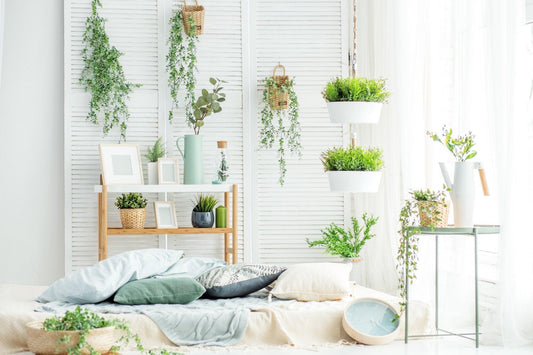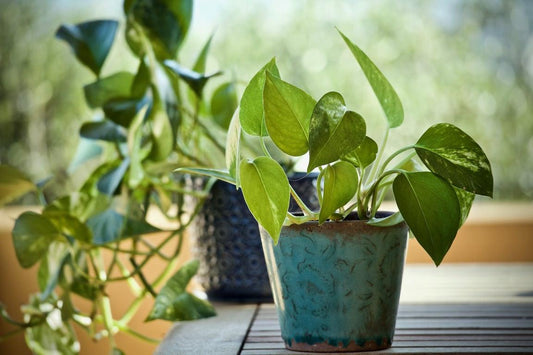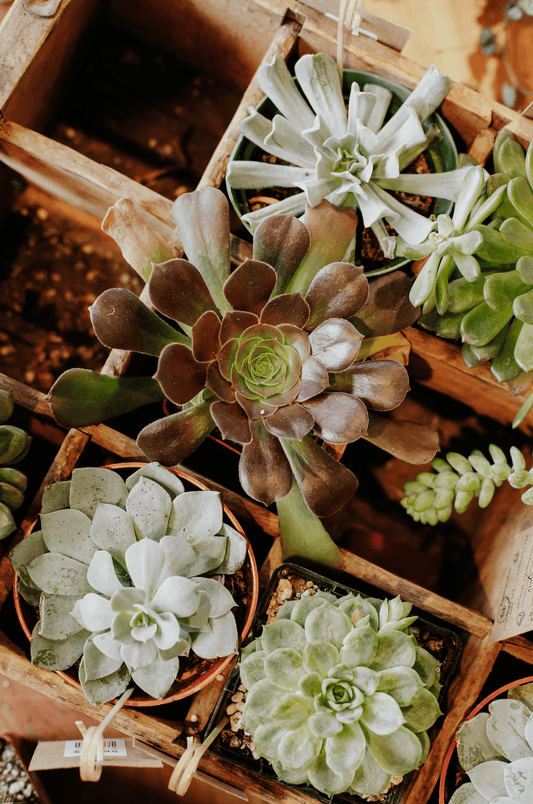Curio (String of..)
How to Care for the Curio (String of..)
Overview
Many plant lovers have heard of the infamous String of Pearls. String of Pearls is just one plant in the Curio family. Curio is a genus of succulent plants, the name coming from the Latin word for curious. These unique plants are curious indeed with their trailing foliage, and unique shaped leaves. In nature, Curio succulents grow vine-like, sprouting roots wherever the stem touches soil, which makes them a very easy plant to propagate. In your home, Curio succulents do well in a hanging basket in a window that receives very bright light.


Profile
Curio leaves grow one right after the other along the long stem. These plump succulent leaves are most commonly round or oblong-shaped with a little translucent window on each leaf to aid in photosynthesis. While String of Pearls is a very well-known Curio, other Curio family members include String of Dolphins, String of Tears, String of Bananas, String of Beans, and String of Watermelons.
If grown under the proper care conditions, Curio plants will reward you with small white flowers. These plants are also toxic to humans and pets. missmarienjose@gmail.com why are they toxic?




Low light
Water does not equal love with succulents. Remember that succulents are desert plants, and deserts don’t get a lot of rainfall. Curio succulents, like most succulents, have plump leaves in order to retain water. Too much water will cause rot. Only water your plant when the soil is 100% dry, and then some. At this point, you can thoroughly water your Curio succulent until water starts coming out of the drainage hole. An important reminder to remember is that succulents don’t like their leaves getting wet, as they will get mushy and soft; this is especially important for Curio plants because their leaves can sometimes sit on top of the soil.

Occasional
You’ll have to check the soil for moisture rather than keeping them on a watering schedule; soil moisture can change depending on the type of pot it is in (terracotta, ceramic, plastic, etc.), how big the pot is, and what time of the year it is. For example, you might only have to water your Curio once every two months in the winter, but the soil dries up much faster in summer heat and sun.

Easy breezy
Still keeping in mind that succulents are desert plants, curio succulents will take as much sun as you can possibly give them. Curio succulents would love to hang out in a very bright window. If it is not getting enough sun, your succulent will become leggy, meaning it will reach for the light while growing, creating a plant that is more stem than foliage, and with a vining plant like this, it can begin to look a little sparse.
Giving emphasis to what we have said earlier, we'd like to give you the important tip that succulents abide by the rule of "less is more." Ignore them more often, and they will thank you for it!
FREQUENTLY ASKED QUESTIONS (FAQs)
on Curio (String of..)
How do you propagate a Curio succulent?
Curio succulents propagate very similarly to other plants! Being that Curio succulents are trailing plants, they can get pretty long and chaotic. Whether you are wanting to give your plant a trim, want to share your plant with a friend, or even fill out your Curio hanging basket, propagation is simple!
While other succulents can be propagated from a single leaf, Curio succulents have better chances of surviving propagation with a string of leaves. Take a clean, sharp pair of scissors or gardening shears and cut a 3-5 inch strand from the bottom of a vine. Cut in between two leaves. You can simply lay your strand on top of some soil and allow it to root. Or, you can stick the cut end into a glass of water and allow the roots to grow an inch or two before transferring to soil.
Why aren’t my Curio leaves plump?
When your Curio succulent leaves aren’t plump, but the plant looks green and healthy otherwise, underwatering is most likely the issue. When plants like succulents don’t get watered for some time, they dip into the water reserves held in their thick, meaty leaves. When Curio succulents are really thirsty, their leaves will begin to look skinny. More bulbous leaves, like the String of Pearls, will look like they have a crease. In order to restore plumpness in your Curio, you must first check the soil to see if it is really dry, then give it a big drink of water. Keep checking the soil over the next few weeks to ensure it gets the right amount of water to replenish the leaves.
Why is my string of pearls sticky?
Usually, in this case, the leaves are sticky. Search your plant for bugs and treat them as appropriate.
With any luck, you might find that your thorough bug search leaves you empty-handed. If this is the case, and you find that your Curio is only sticky on the stem, this is normal. In the wild, this sticky residue is meant to adhere the plant to natural surfaces, like rocks and trees, so that they don’t move too much. Keep an eye on your Curio, though, just in case the pests are hiding!




